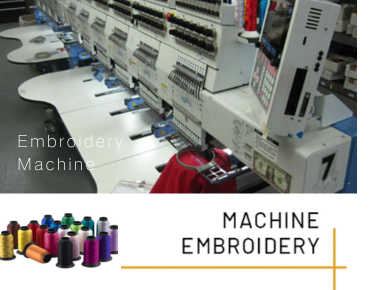5 Tips to Improve Embroidery Digitizing Quality
Embroidery digitizing is an art that requires precision, creativity, and technical skill. Whether you're a seasoned professional or a novice, improving the quality of your embroidery digitizing can significantly enhance the final product. Here are five essential tips to elevate your embroidery digitizing quality. One of the first steps is to choose the right embroidery digitizing software that suits your needs and expertise level.
1. Understand the Fabric
The type of fabric you are working with plays a crucial role in how your design will turn out. Different fabrics have varying textures, weights, and stretch properties, which can affect the embroidery process. For instance, a design that looks perfect on cotton might not translate well onto a stretchy knit. Understanding the fabric helps in choosing the right stitch types and densities, ensuring that the design maintains its integrity and appearance.
2. Optimize Your Design
Before you start digitizing, it's important to optimize your design. This involves simplifying complex elements and ensuring that the design is suitable for embroidery. Overly intricate designs can lead to thread breaks and machine errors. By streamlining the design, you not only improve the quality but also reduce production time and costs.
3. Choose the Right Stitch Types
Stitch types are the building blocks of embroidery digitizing. Each type of stitch serves a different purpose and is suitable for different parts of a design. For example, satin stitches are ideal for borders and text, while fill stitches work well for larger areas. Understanding when and where to use each stitch type can greatly enhance the quality of your embroidery.
4. Pay Attention to Stitch Density
Stitch density refers to the number of stitches in a given area. Too many stitches can cause puckering and make the fabric stiff, while too few can result in a sparse, unfinished look. Adjusting the stitch density according to the fabric and design is crucial for achieving a balanced and professional finish.
5. Test Your Design
Testing is a vital step in the embroidery digitizing process. Before finalizing your design, run a test on a similar fabric to see how it performs. This allows you to make necessary adjustments and ensures that the final product meets your quality standards. Testing can save you from costly mistakes and ensure customer satisfaction.
Advanced Techniques and Tools
For those looking to further enhance their skills, exploring advanced techniques and tools can be beneficial. Learning about different machine embroidery digitizing techniques and experimenting with new software features can open up new possibilities and improve your craft.
Stay Updated with Industry Trends
The embroidery industry is constantly evolving, with new trends and technologies emerging regularly. Staying informed about these changes can help you keep your skills sharp and your designs fresh. Engaging with online communities, attending workshops, and following industry leaders are great ways to stay updated.
In conclusion, improving your embroidery digitizing quality involves a combination of understanding your materials, optimizing your designs, and continually learning and adapting. By implementing these tips, you can ensure that your embroidery projects are of the highest quality. For those seeking professional assistance, Eagle Digitizing excels in providing professional embroidery digitizing services, ensuring every design is crafted with unmatched precision.


